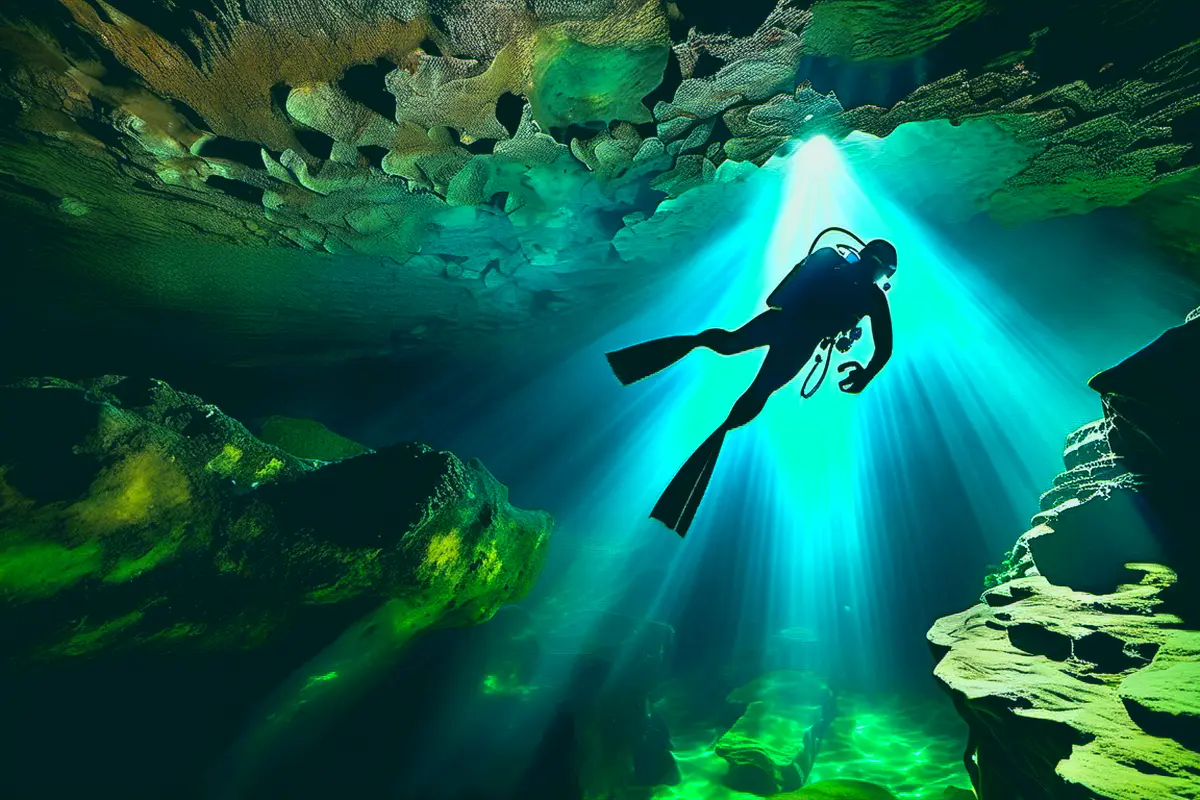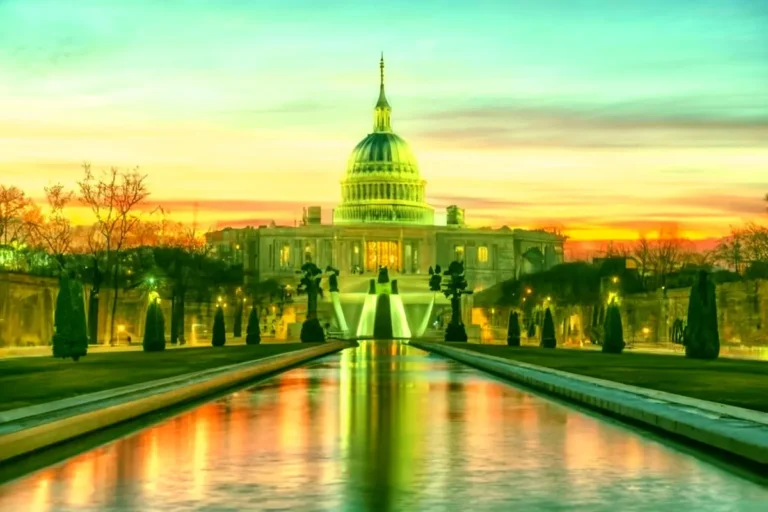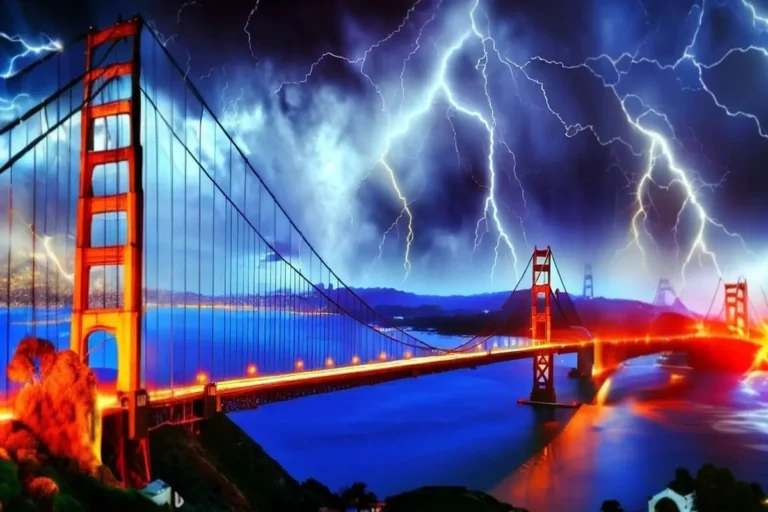Unveiling the Hidden Treasures: Investigating Niagara Falls’ Underwater Secrets

Introduction
Get ready to plunge into the mesmerizing depths of Niagara Falls’ underwater secrets!
Niagara Falls stands as a symbol of awe-inspiring natural beauty and power, drawing millions of visitors each year to witness its majestic cascades.
However, beyond the breathtaking surface display lies a captivating world of historical artifacts and geological wonders that have long remained shrouded in mystery.
In this investigative journalism article, we will plunge into the depths of Niagara Falls’ underwater wonders, revealing a hidden history that few have explored.
The Underwater Graveyard: Shipwrecks of the Past

Over the years, the tumultuous waters of Niagara Falls have not only captivated hearts but have also claimed their fair share of vessels. This underwater graveyard tells tales of maritime tragedies, of daring explorations gone awry, and of the transport that played a pivotal role in shaping the region’s history. As we embark on this investigation, we will uncover the stories of these sunken ships and delve into their historical significance, shedding light on the lives and endeavors of those who navigated the Great Lakes.
From the eerie remains of cargo ships to the ghostly outlines of steamboats, the sunken vessels offer silent narratives of the challenges and triumphs of maritime exploration. Imagine standing on the precipice of history, gazing into the depths to witness a snapshot frozen in time. These wrecks are more than just forgotten hulks; they are windows into the past, whispering tales of brave sailors battling against the elements, striving to conquer the unpredictable waters.

The Niagara Scow, a testament to daring and survival, grounded perilously above the brink of Horseshoe Falls in 1918. Over a century later, it remains frozen in time, an iconic reminder of human resilience amidst nature’s power, captivating the imagination of all who gaze upon its precarious stance.
The very concept of a graveyard beneath the waves might send shivers down your spine, but it’s a reminder of the relentless power of nature and the tenacity of those who dared to voyage across the vast waters. It’s a place where the echoes of turbulent storms and whispered conversations of sailors linger, preserved beneath layers of water and silt.
As you explore this hidden world, you can’t help but feel a sense of connection with those who came before us. These maritime tragedies are not mere footnotes in history; they are stories of heartache, courage, and resilience. They remind us that even in the face of adversity, humans have always been driven to explore and conquer the unknown, even when it meant braving the treacherous waters around Niagara Falls.
Delving deeper into the research, we uncover accounts of heroic attempts to navigate the roaring currents and the challenges that sailors faced when attempting to navigate around the falls. These tales of daring navigations and heart-stopping encounters with nature’s fury bring to life the struggles and triumphs of these mariners. Each sunken ship holds within it a chapter of the region’s history, waiting to be unraveled and shared.
Through interviews with maritime historians, descendants of sailors, and experts in underwater exploration, we piece together the puzzle of these submerged stories. The artifact of a sailor’s shoe, a fragment of a journal entry, or a corroded navigation instrument—each detail contributes to the larger narrative of life on the Great Lakes. These artifacts are like time capsules, offering a glimpse into a bygone era and allowing us to connect with the past in a profound way.
The very phrase “sunken ship” evokes images of mystery and adventure. It’s a phrase that conjures tales of pirates and lost treasures, but the reality is often more poignant. These shipwrecks are not just relics; they are poignant reminders of the lives lost, the dreams shattered, and the human stories that unfolded amid the waves. Some ships may have met their fate due to storms or navigational errors, while others fell victim to the unforgiving rocks lurking beneath the waters.
As we continue our journey through this underwater graveyard, we must also acknowledge the challenges of preserving these submerged relics. Time, currents, and the very elements that brought these vessels to rest are the same elements that threaten to erase them from history. Conservationists, historians, and local communities are working tirelessly to protect these fragile time capsules, striking a delicate balance between exploration and preservation.
The underwater graveyard of Niagara Falls is more than a collection of shipwrecks; it’s a testament to human endeavor, the power of nature, and the resilience of history itself. As we dive into the depths of these narratives, we are reminded of the stories that continue to shape our understanding of the past. The silent tales of these sunken ships invite us to listen closely, to hear the whispers of those who navigated these waters before us, and to honor their legacy by preserving the treasures they’ve left behind.
Peering into the Past: Exploring Underwater Relics

Diving deeper into the abyss, we unearth a trove of underwater relics that have lain dormant for decades. These artifacts serve as tangible links to a bygone era, offering a unique glimpse into the past that history books often overlook.
Anchors weathered by time, cargo containers once brimming with goods, and remnants of once-mighty vessels weave a narrative of commerce, trade, and exploration that shaped the economic landscape of the Great Lakes region. The significance of these artifacts is not just in their materiality, but in the stories they tell. Each anchor speaks of a ship’s struggle against the currents, every cargo container hints at the goods that traversed these waters, and the remnants of vessels are silent witnesses to the challenges faced by mariners.
Statistics and Data: Did you know that there are over 200 known shipwrecks in the waters around Niagara Falls? These wrecks hold valuable insights into the historical significance of the Great Lakes as a transportation route. Through careful analysis of these artifacts, historians have been able to trace the evolution of trade routes, the types of goods exchanged, and the technology used in maritime transportation.
As we embark on this journey of discovery, the artifacts themselves become the storytellers. But their tales are not complete without context. Through meticulous research, we’re engaging with maritime historians, archaeologists, and experts in underwater exploration to delve deeper into the lives and stories behind these relics. It’s like piecing together a jigsaw puzzle, where each fragment adds more detail to the picture of the past.
Data Dive: In the archives, we find records of the vessels that once plied these waters, names that were once known to every sailor and port worker. The weight of history is palpable as we read about the voyages, the cargo carried, and the challenges faced.
Historical records show that many of these ships were engaged in trade routes that connected the heartland of North America to distant ports, facilitating the movement of raw materials, finished products, and even people.
Through interviews with experts who have dedicated their lives to understanding these relics, we get a glimpse into the stories behind the artifacts. These conversations provide insights into the lives of sailors who braved the waters, often facing harsh conditions and uncertain outcomes. They bring to life the human side of maritime history—the hopes, fears, and aspirations of those who sailed these vessels.

Connecting the Dots: The relics themselves hold a kind of magic, a tangible link to a time long gone. But it’s in connecting these artifacts to historical records and untold anecdotes that their true value comes to light. The faded journal entries of a ship’s captain, the bills of lading detailing cargoes, and the correspondence between merchants—all these fragments offer glimpses into the day-to-day realities of maritime life.
Imagine the thrill of discovering an anchor that once held fast against the currents, allowing a ship to dock safely and unload its cargo. The same anchor that might have been hastily dropped during a storm, a desperate attempt to avoid disaster. It’s these contrasts that make these relics so much more than mere objects—they’re touchstones for stories of survival, resilience, and determination.
Statistics Spotlight: Research indicates that many of these artifacts have been preserved remarkably well due to the cold freshwater environment of the Great Lakes. Items such as clothing, tools, and personal effects have been found intact on some wrecks, providing a snapshot of life during the time these vessels sailed.
As we piece together the puzzle of these submerged artifacts, we’re giving a voice to the long-forgotten sailors and traders who charted these waters. Their stories were once buried beneath layers of water and silt, but now, through the collaboration of historians, experts, and technology, these stories are resurfacing. It’s a journey that goes beyond the artifacts themselves; it’s about connecting with the people who lived these stories, understanding their struggles and triumphs, and honoring their legacy.
As we navigate the depths of history, we find ourselves immersed in a world that time forgot. The underwater relics tell a tale of a bustling trade route, of vessels that braved the elements, and of the humans who shaped the landscape through their endeavors. Through these artifacts, we’re not just discovering history; we’re reimagining the past, giving it color and texture, and ensuring that the stories of those who came before us continue to echo through time.
The Subaquatic Frontier: Unraveling Underwater Caves and Rock Formations

Beyond the shipwrecks, the relentless currents of Niagara Falls have sculpted a realm of subaquatic wonder. Our investigation takes us into a world of underwater caves and rock formations that few have ventured to explore.
These hidden features bear testament to the geological forces that have shaped the falls and the surrounding landscape over millennia. Collaborating with geologists and intrepid underwater explorers, we gain insight into the intricate processes that have given rise to these breathtaking formations.
From the intricate dance of water and minerals to the gradual carving of rock by sheer force, these formations elevate the mystique of Niagara Falls, highlighting the ever-changing interplay between nature and time.
Data Dive: Geological studies reveal that the rocks around Niagara Falls were formed over 400 million years ago during the Ordovician period. The rocks, primarily consisting of limestone and shale, were gradually shaped by the flow of water, erosion, and even glacial activity during the Ice Age. This long history of geological transformations contributes to the unique formations we see today.
As we dive into the investigation of these underwater caves, we uncover a world that has remained largely hidden from human eyes. The caves are carved by the unyielding force of water, shaped over countless years. They are like nature’s own hidden chambers, tucked beneath the surface and accessible only to those who dare to venture beneath the waves.
Exploration Expedition: Picture this: Donning scuba gear, you descend into the depths, guided only by the dim light of your flashlight. As you navigate through the underwater passages, you come face to face with the intricate beauty of these caves. Stalactites and stalagmites hang from the ceilings and floors, forming delicate sculptures that have taken centuries to evolve.
These formations are more than just visually stunning; they’re a testament to the geological drama that has unfolded over eons. Some caves are large enough to house entire ecosystems, supporting unique aquatic life that thrives in the darkness. It’s a reminder that even in the most inhospitable of environments, life finds a way to adapt and flourish.
Statistics Spotlight: Geologists estimate that the process of erosion and rock formation at Niagara Falls continues at an average rate of about one foot per year. This slow yet relentless process means that the falls and its surroundings are in a constant state of transformation, ensuring that the landscape is ever-evolving.
The collaboration with geologists and underwater explorers has revealed a deeper understanding of the intricate processes that have shaped these formations. The interplay between water, minerals, and time is a delicate dance that results in the awe-inspiring beauty we see today. The gradual deposition of minerals has given rise to the delicate formations that decorate the caves, a testament to the enduring power of nature’s craftsmanship.
Unveiling Mysteries: Exploring these underwater caves is like stepping into a hidden world frozen in time. The formations stand as a testament to the slow and patient work of nature, a reminder that the forces that shaped these caves are the same forces that continue to shape our planet.
But there’s more to these formations than meets the eye. The caves are not just passive observers of geological processes; they actively interact with the water, influencing its flow and dynamics. By understanding these interactions, scientists gain valuable insights into the delicate balance that shapes the falls and its surroundings.
The subaquatic wonderland beneath Niagara Falls is a realm that few have had the privilege to explore. As we dive into the hidden caves and marvel at the rock formations, we are reminded of the deep and intricate connections between nature, time, and the ever-changing landscape. These formations are not just geological features; they’re a living testament to the beauty and complexity of our planet’s history. Through collaboration with experts, we’re gaining a deeper understanding of the processes that have shaped this subaquatic frontier, enriching our appreciation for the wonders that lie beneath the surface.
Guardians of the Depths: Preserving Niagara’s Submerged Heritage

As we unravel the secrets of Niagara’s underwater realm, a pressing question emerges: How can we ensure the preservation of these historical treasures? Our investigation turns toward the efforts being made to protect and conserve these submerged artifacts. Engaging with conservationists, local authorities, and environmental advocates, we shed light on the challenges faced in safeguarding the hidden heritage of the falls. Striking a delicate balance between exploration and conservation, these individuals work tirelessly to ensure that the underwater wonders remain accessible to future generations while minimizing the impact on the fragile ecosystem.
Conclusion
Beneath the majestic surface of Niagara Falls lies a world of captivating history and geological marvels.
Through our investigative journey, we’ve navigated the turbulent waters of the falls’ past, uncovering shipwrecks that recount tales of tragedy and triumph, artifacts that bridge the gap between eras, and geological wonders that add to the allure of this iconic site.
The underwater mysteries of Niagara Falls remind us that there’s more to its beauty than meets the eye—a testament to the power of investigative journalism to unveil hidden stories that enrich our understanding of the world around us.
As we continue to explore the depths, let us remember that beneath the surface ripples a history waiting to be uncovered, a history that connects us to our maritime past and the enduring forces that have shaped our natural world.





